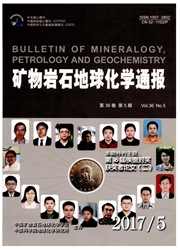

 中文摘要:
中文摘要:
碳酸岩是揭示地幔地球化学动力学的“探针岩石”,迄今有关碳酸岩的研究集中在裂谷环境,而鲜见造山带地区碳酸岩研究的报道。在四川攀西喜马拉雅期造山带、秦岭造山带和华北中央造山带内均有碳酸岩产出,且蕴藏了大型稀土和钼矿床,是研究深俯冲、壳-幔作用和深部碳循环的理想实验室。传统观念认为碳酸岩形成于裂谷环境与地幔柱活动相关,而造山带碳酸岩很可能是陆源富碳沉积物俯冲至地幔低程度熔融的产物。中国造山带内碳酸岩地球化学研究均显示了地壳物质对碳酸岩地幔源区的贡献,这暗示地表碳俯冲至深部地幔,交代地幔发生熔融,这不仅为较还原的地幔源区提供富氧成分,还可以使碳酸岩的母体岩浆更富集稀土,形成稀土矿床。
 英文摘要:
英文摘要:
Carbonatites play a critical role in understanding mantle geochemistry dynamic processes. Previous studies focus mainly on carbonatite in rifting settings,however, carbonatites emplaced in orogenic belts have rarely been reported. The rocks from Qinling,Panxi,and the North China central orogenic belt in China host large REE and Mo deposits that can serve as a perfect "laboratory" for studies of subduction, crust-mantle interaction, and Earth's deep carbon recycle. It is well known that carbonatites in rifting environments are generally associated with mantle plume activities. In Contrast,oro- genic carbonatites are considered to be the products of low-degree partical melting of metasomatized mantle by subducted carbon-rich sediments. Geochemistry of carbonatites in the orogenic belts in China have shown the involvement of crustal materials into the mantle. Subduction of crustal carbon can not only provide oxygen-rich compounds to the mantle,but also result in high REE in carbonatite parental magmas, thus forming REE deposits.
 同期刊论文项目
同期刊论文项目
 同项目期刊论文
同项目期刊论文
 期刊信息
期刊信息
